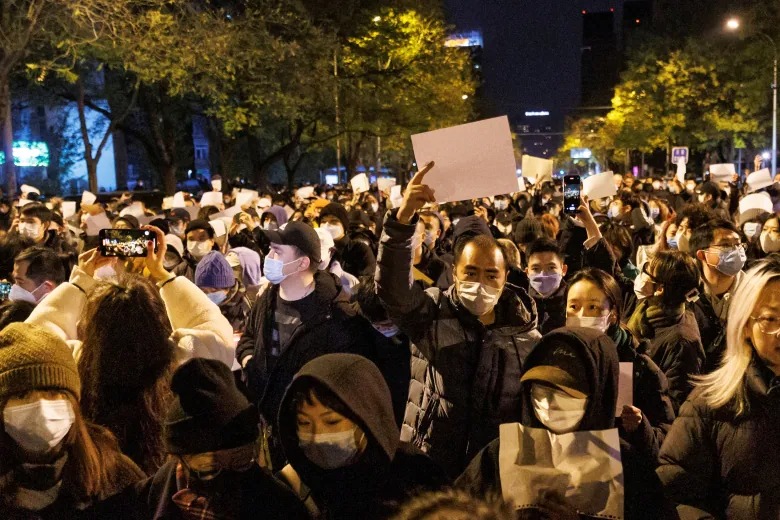Widespread protests in China recently shocked both the world and the Chinese Communist party. This insurrection not only was unexpected, due to the pervasive societal control and censorship pursued by the government, but also for the first time it threatened directly Xi’s rule over the country. The decentralized uprising started with the “white sheets revolution”, as students used white A4 papers as a symbol to complain about the profound censorship and lack of freedom of speech in China. The protests started mainly in response to a fire that happened in the city of Urumqi, in which 10 people remained trapped and died while they couldn’t leave their apartments because of Covid restrictions.
Riots and strikes in China are usually suppressed by using the armed forces or via intimidation and threatening. Since the risk for citizens of getting recognized and reported by the police is high, the effectiveness of these means is usually high. The country is clearly entering a difficult period, given the slowing down of the economy, the surge in covid cases, the scarce efficacy of Chinese vaccines and the still-too-strict quarantining rules. Will these tumults translate into something dangerous for the Party’s regime? How were they possible in the first place?
Interestingly enough, the movement breaks through right after Xi’s coronation as the leader of the Chinese Communist Party. Even if they surprised everyone, these stunning protests were clearly anticipated by a diffused discontent over the “zero Covid” policies, that have become now a more political and less scientific measure to control the spread of the virus within the country. Moreover, the economic stagnation in which China is falling into is causing social unrest, given the fact that economic growth has been, especially in recent years, the main element that strengthened social bonds and ended the poverty of a greater part of Chinese people; not by chance those who are protesting are mainly youths. They are those who experienced the recent health and economic crisis in the harshest way, as attested by the youth unemployment rate that in 2022 reached 17.9%. The implicit social pact guaranteeing stability and prosperity in exchange for privacy and more governmental control is now broken, with growing discontent against the ruling class. The strict Covid policies adopted by Xi’s administration are not only endangering short- and long-term economic growth, but they are also causing a get-away of western firms from the country (the great strength of the past Chinese economy). Chinese citizens learned that the normality they were experiencing (massive lockdowns due to few cases) is an outdated strategy all over the world, only optimal to a political class that is not able to restore a pre-pandemic situation.


